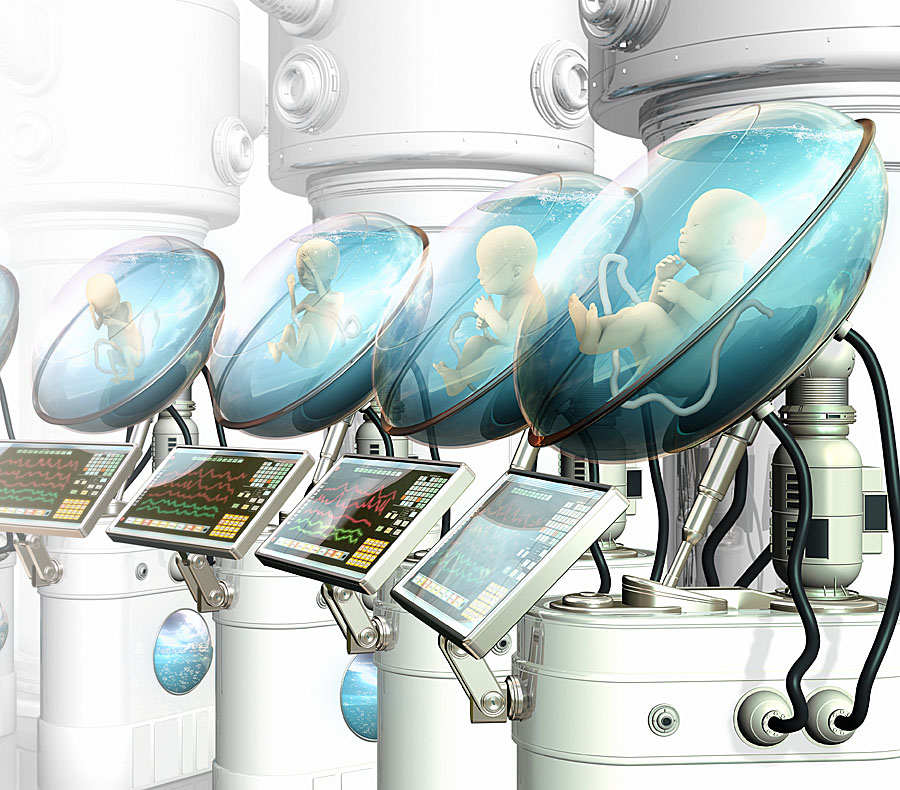Artificial intelligence seems to found its way in a broad range of fields. Although, this magnificent technology has surprised me earlier with its limitless abilities, I would have never guessed that it would have been able to merge with human reproduction. Artificial intelligence may disrupt one of the most natural facets of life: surrogacy and pregnancy. This means that there may be a new way to breed babies without the horrendous pain that pregnancy brings.
This new way of “producing” babies is still a concept and carries the name “artificial womb”. It is an incubator shaped like an egg with a transparent shell, which can be operated from home. The incubator allows the to-be parents to feed the fetus through a tube and communicate with it using a microphone (Tamburro, 2017). The video below will give you a little impression of the artificial womb.
This concept is not being brought to market yet and it’s said that the required technology is far from becoming a reality (Tamburro, 2017). Nevertheless, an artificial womb for animals has been designed. It successfully kept a lamb fetus in the conditions to grow in a so called biobag, that could potentially be used as incubation for human babies in the future. Despite the rage it may create in society it would be helpful to support babies that had been born prematurely. For a premature born baby a chance of survival is 15% at 23 weeks, 55% at 24 weeks and 80% at 25 weeks. An artificial womb could be helpful as an extensive time in an external womb” (Devlin, 2017).
In my opinion an artificial incubator in order to give premature born babies a better chance at life would be incredible. But I do think that artificial intelligence must not interfere with the earlier phases of reproduction. There is something mysterious about the natural and biological way of reproduction, which creates a strong bond between the parents and the unborn baby. Research has indicated that the interaction with parents has a positive impact on the development in premature infants. In addition, researchers state that a baby in an artificial womb will not benefit from the maternal influences of labor, placental influence of hormones and biochemical signals (Yuko, 2017).
Science creeps more in to replicating the parts and functions of the human body. It surely may be beneficial for the premature babies, but shouldn’t there be a border between what machines should and shouldn’t be able to do? Have researches taken it too far with this conceptual womb? And how much humanity will be left if humans won’t even reproduce the ‘old-fashioned’ way?
https://www.youtube.com/watch?v=cgmdF9l7K9o%20
References:
Devlin, H. (2017). Artificial womb for premature babies successful in animal trials. Retrieved September 28, 2017, from https://www.theguardian.com/science/2017/apr/25/artificial-womb-for-premature-babies-successful-in-animal-trials-biobag
Tamburro, P. (2017). This Artificial Womb Concept Lets You Grow a Baby in Your House. Retrieved September 28, 2017, from http://www.craveonline.com/design/1286627-artificial-womb-concept-lets-grow-baby-house
Yuko, E. (2017). Weighing the Ethics of Artificial Wombs. Retrieved September 28, 2017, from https://www.nytimes.com/2017/05/08/health/artificial-wombs-ethics.html

